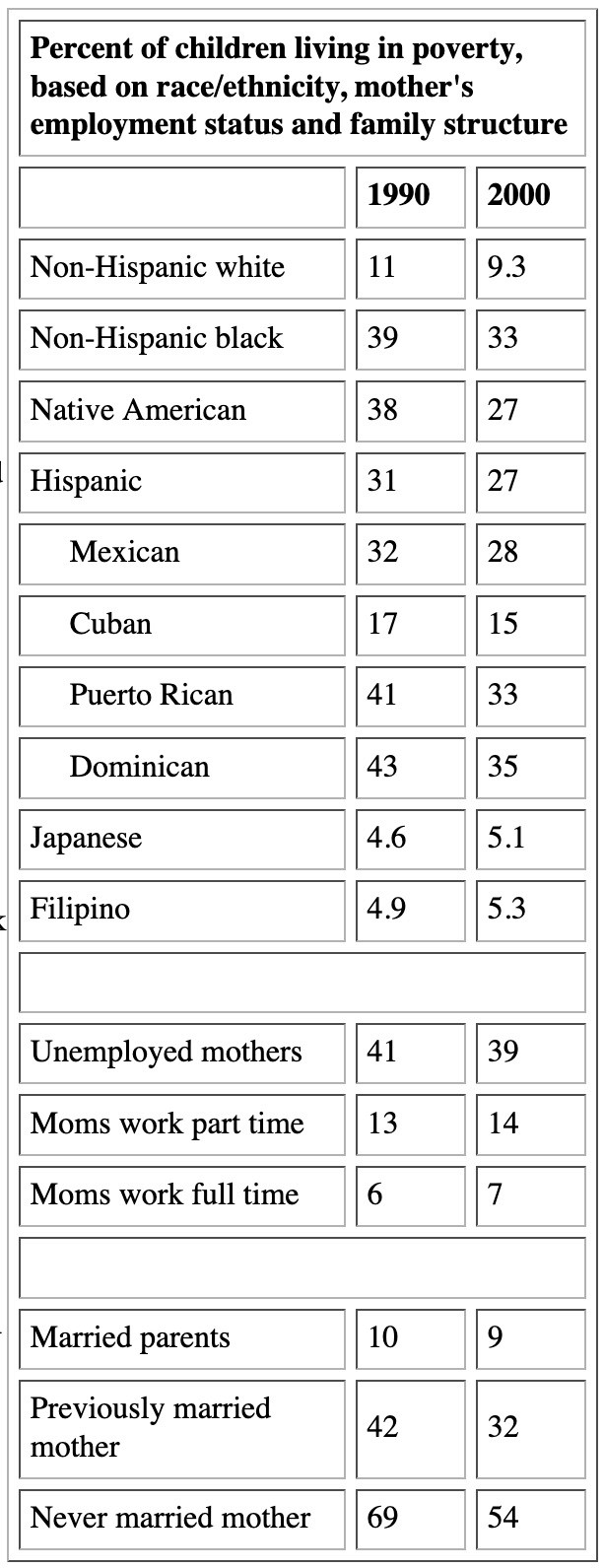Working mothers, and particularly single mothers with jobs, are helping reduce U.S. child-poverty rate, Cornell study finds
By Susan S. Lang
The number of children living in poverty in the United States has been declining, and the 2000 rate – 16 percent – is the lowest in 20 years. The reason: More mothers – especially single mothers – are working, a new Cornell University study reports.
But the study also points out that family racial and ethnic background still accounts for much of the difference in poverty among children.
"Our analyses find that rapid increases in maternal employment during the 1990s, thanks to a robust economy, welfare reform and more work supports, provided a hedge against rising child poverty and a route to economic self-sufficiency for growing shares of single mothers and their children," said Daniel Lichter, professor of policy analysis and management and director of the Bronfenbrenner Life Course Center, both at Cornell.
Lichter suggested that encouraging maternal employment through additional work supports, such as child-care subsidies, training or more education, can play a role of reducing poverty among children, including minority children. At the same time, racial inequality also is rooted in diverging family and fertility patterns across America's diverse population groups. Lichter said, "Current government, community and faith-based programs that encourage and support healthy two-parent married couples may be especially beneficial to low-income minority families and their children. A stable job that pays a family wage, however, may be the best marriage promotion policy."
Lichter and two colleagues, Zhenchao Qian, associate professor of sociology, and Martha Crowley, a graduate student, both of Ohio State University, looked at how changes in family structure (i.e., single-parent vs. two-parent families) and maternal employment during the 1990s shaped children's shifting economic fortunes, comparing children from a wide range of backgrounds.
Unlike other studies, which have looked at child poverty based on a few very broad racial and ethnic groups, the researchers zeroed in on changes in economic disparities across 25 different racial and ethnic groups, including breakdowns by generation of immigrant status and country of origin, by analyzing data from the 1990 and 2000 Public Use Microdata Samples of the U.S. decennial censuses.
Their findings, which are published in a special supplement to the December issue of Social Sciences Quarterly (86:5), indicate, for example, that in 2000, 9 percent of non-Hispanic white children lived below the government's poverty line, compared with 33 percent of non-Hispanic black children, 31 percent of Native American and 27 percent of Hispanic children. Japanese and Filipino children, on the other hand, had the lowest poverty rates: about 5 percent of both were poor in 2000.
About 39 percent of children whose mothers were unemployed were poor in 2000, compared with 7 percent of children whose mothers worked full time.
While 9 percent of children in married-couple households were poor in 2000, 32 percent of children in families headed by divorced females and 54 percent of children living with never-married mothers were poor.
Although the slowdown in the growth of single-parent families did not play a large role in reducing child poverty during the 1990s (though these changes did play a large role before 1990), differences in marriage and out-of-wedlock childbearing continue to account for a large part of observed differences in child poverty among minority and immigrant groups.
"Overall, black children's poverty rates were 2.7 times greater than white children's rates," said Lichter, noting that poverty rates among third-generation black and white children (native-born children of native-born parents) were 34 and 9 percent, respectively, in 2000. "If these children had the same distributions across family types – for example if the same proportion lived in two-parent families – black children's poverty rates would be less than two times greater than white children's."
Racial and ethnic differences in work patterns, however, he said, account for very little of the racial and ethnic variation in child poverty rates.
The study was supported, in part, by Save the Children Federation, the National Science Foundation, and the National Institute of Child Health and Human Development.
Media Contact
Get Cornell news delivered right to your inbox.
Subscribe